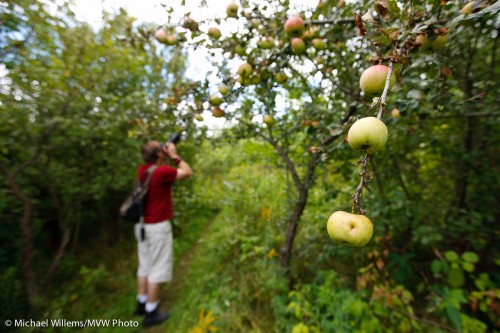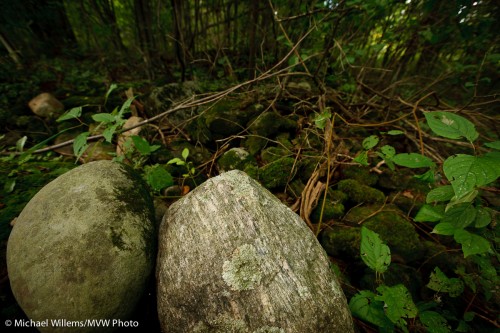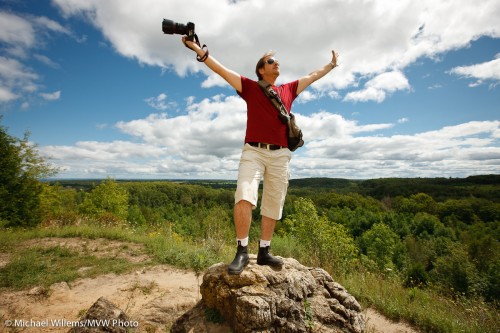I have mentioned this before: the need to have your audience piece things together themselves.
One way is to use selective depth of field. Like in this snap from a recent outing in Mono Cliffs Provincial Park:
You see the apple first, then a blurred out view of the photographer, then you figure out what it is, then you slowly see what’s happening.
This snap also shows the benefit of wide angle lenses. As does this:
Depth! And I also used a bit of flash, with a half CTO gel.
And one more, finally: colleague Joseph Marranca in the park at the lookout point. Also shot with a little fill flash with a half CTO gel, with the camera’s white balance set to flash. After first exposing properly for the background, of course.
What we are doing there? tracing out the route for the upcoming Nature Walk course!
All those shots were taken with a wide angle lens. Wide meaning 16mm (or 10mm if you have a “crop factor” digital camera, i.e. one that is not “full frame”). Wide angles rock.




Hi Michael,
Your shots are very interesting, but I don’t feel I ever manage to reproduce that kind of effect.
When I use a rather wide lens, i.e 18mm on a crop camera I always have the feeling that there is some unwanted elements that come into the picture. Then I prefer to use a little narrower focal lenght. Any help on that ? Wide angle and composition to have only interesting elements in the picture ?
Well, yes. Three suggestions.
1, a circle has 360 degrees; and you do not need to be taking pictures from 5feet above the ground; and you can go diagonal (I do that rather a lot).
2. Blur out the background (ditto)
3. Get close. Now get closer (ditto).
It is true that wide angles tend to show the environment (that’s the advantage!), but it is also true that you do not always want to show that environment: the tips above help tie it together.
Does that help? I bet it does if you try it, consciously.
Thanks a lot, yes it helps, I thought about getting closer; I suppose I’ll try one step even closer now.
And the 2 other points I definitely need to work on!